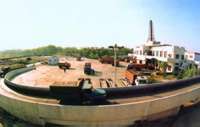|
Summary |
 |
 |
||||
|
Basic Situation of Natural Protection Work by Region
|
|||||
|
The public awareness of environmental protection was enhanced and the development of environmental protection undertakings accelerated. At the end of 2000, there were 128,000 people working in environmental protection agencies in China. Some 2,204 environment monitoring stations at various levels employed 40,000 workers. New achievements were made in natural conservation, with the number of pilot ecological demonstration zones reaching 213. China had 1,227 nature reserves, including 155 at the national level, which covered 98.21 million hectares, or 9.9 percent of the country's total land area. The construction of the legal system for environmental protection achieved new progress, with intensified enforcement of related laws. By the end of 2000, a total of 438 standards of various types for environmental protection had been formulated. Some 91.5 percent of construction projects started in the year were subject to examinations to evaluate their influence on the surrounding environment and 98 percent of projects that went into operation in 2000 were equipped with pollution control facilities. A total of 38,101 environmental pollution control projects were completed within the specified time set for the year, absorbing a total investment of 20.8 billion yuan. Some 2,718 smoke/dust control zones were established in 537 cities, covering an area of 18,000 square km, and there were 2,288 zones covering 13,000 square km in 476 cities, where the noise pollution was brought down to a specified level. The deterioration of environmental pollution was initially put under control, with the total volume of discharge of major pollutants declining continually. In 2000, the total discharge of 12 major pollutants reduced by 10 to 15 percent compared with that in 1995. By the end of October 2000, over 90 percent of the 238,000 polluting enterprises had met pollutant drainage standards. Of the 46 key cities designated for environmental protection, 33 were up to the standard in terms of the surface water quality and 22 met the standard for air quality. Of them, 18 cities were up to the standard in both air and surface water quality, and the rest cities were close to the standards. Progress was made in key environmental protection projects. Some 95 percent of the 5,188 major polluting enterprises, located in the valleys of the Huaihe, Liaohe and Haihe rivers and Taihu, Dianchi and Chaohu lakes, met pollutant drainage standards. Fifty-five municipal sewage treatment plants were built in these valleys and another 111 were under construction. These plants accounted for 67 percent of the total planned to be built. Initial results were seen in the control of air pollution. Of the 175 cities in regions designated for controlling acid rain and sulfur dioxide, 102 attained the second grade standards in terms of the concentration of sulfur dioxide in the air. By the end of November 2000, some 3,944 of the 4,678 sulfur dioxide-emitting enterprises in the control regions met the emission standard, accounting for 84.3 percent of the total. |
|||||